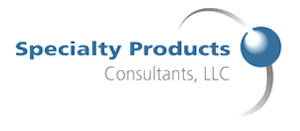 MENDHAM, NJ—According to Specialty Product Consultants’ Gary Curl, the U.S. structural pest control industry generated an estimated $7.213 billion in total service revenue in 2013, a 5.9 percent increase from the $6.815 billion measured in 2012. The Top 4 U.S. service providers, Orkin, Terminix, Ecolab and Rentokil, represented nearly 45 percent of the total industry revenue for the termite and general pest control market segments this past year.
MENDHAM, NJ—According to Specialty Product Consultants’ Gary Curl, the U.S. structural pest control industry generated an estimated $7.213 billion in total service revenue in 2013, a 5.9 percent increase from the $6.815 billion measured in 2012. The Top 4 U.S. service providers, Orkin, Terminix, Ecolab and Rentokil, represented nearly 45 percent of the total industry revenue for the termite and general pest control market segments this past year.
Rodent control service revenue was particularly robust this past year. In the Northeast United States, pest control companies reported that their highest percentage of revenue earned was from controlling mice and rats.
“We believe ‘Superstorm Sandy’ that hit the East Coast in late October of 2012 may have displaced rodents, resulting in an increased need for control efforts in the region this past year,” Curl says.
Total manufacturer level revenue for rodenticides increased nearly 10 percent this past year. Three active ingredients — bromadiolone, difethialone and brodifacoum — accounted for more than 85 percent of total U.S. rodenticide sales.
Nationwide, 86.5 percent of the respondents said their company treated for bed bugs. Six of ten respondents primarily relied on insecticide treatments to control bed bugs.
One in five (19.9%) relied on heat or steam treatments. Service revenue derived from controlling bed bugs increased more than 11 percent from the prior year, bringing the total revenue earned from controlling this pest to nearly $450 million. Single-family
homes and apartments were the primary leading types of accounts pest management professionals (PMPs) treated for bed bugs, followed by hotels and motels.
Nationwide, PMPs reported good growth in both residential (+4.6%) and commercial (+6.5%) service revenue from the prior year. Total service revenue generated from termite work improved, as well.
“The latter was somewhat surprising as nationwide, respondents reported a ‘weaker than normal’ termite swarm season this past year,” Curl points out.
The South Central (TX, LA, OK, AR) region of the U.S. reported the weakest swarm season with nearly two-thirds (65.4%) of the respondents reporting a “much weaker than normal” or “weaker than normal” swarm season. Nevertheless, there was a nearly 4 percent increase in the number of post-construction termite jobs completed.
Improved pricing actions raised the average post-construction job 5.4 percent to $836.04 per treatment this past year. Pre-construction termite treatment revenue increased 8.1 percent on the strength of an 18.5 percent increase in privately owned new housing unit construction “starts.” Nearly 45 percent of all privately owned housing “starts” in the U.S. received a pre-construction termite treatment this past year.
Total manufacturer level revenue increased 5.7 percent this past year, to more than $515 million. After a number of challenging years for suppliers, this brings total manufacturer level sales revenue back to the same level experienced more than 10 years ago (2003).
Nearly nine of ten (85.8%) operators surveyed said they were aware of the U.S. Environmental Protection Agency’s (EPA’s) national initiative, which changed the outdoor use directions for pyrethroid insecticide products. More than half (51.1%) reported that they had stopped power spraying pyrethroids and switched to using a “backpack” or smaller sprayer. More than one-quarter (28.9%) said they had not been affected yet, as they had “stocked up” on older labeled products.
The 2013 season market report is the 14th edition of A Strategic Analysis of the U.S. Structural Pest Control Industry. A total of 800 owners or managers of pest control companies were surveyed for this study. The market report forecasts pest control service revenue through 2015, and pesticide product category sales through 2018. The impact of the commercial and residential real estate market, mosquito and wildlife management services, changes in distribution, and PMPs’ outlook for 2014 are just a few of the topics analyzed in this year’s report.
Leave A Comment